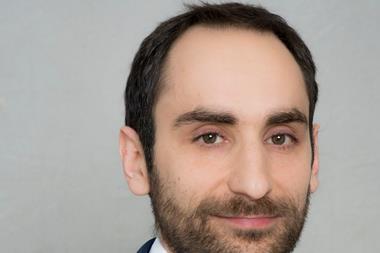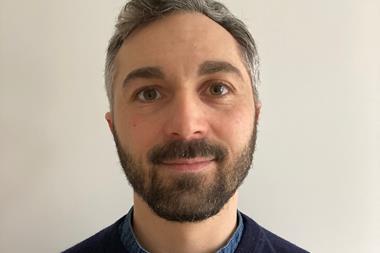“The Netherlands can learn from countries with more experience of DC and other countries can profit from Dutch expertise of risk sharing”

We Dutchmen are used to sharing costs and risks. Our centuries-old fight against the sea has taught us some important lessons: “If I do not want wet feet, we have to build dykes, together.” Only through co-operation can we protect our people in the low lands.
Our retirement system follows the same principle: “I want enough retirement income, so we accrue pensions collectively.” We will share the related risks within and between generations. Only in this way can we offer an adequate pension with an affordable contribution for all stakeholders.
An adequate and affordable pension needs sufficient long-term return by investing in real assets such as equities. Sufficient return is crucial: an investor who misses 1% return per year will lose 30% of their pension over a lifetime. So, for the member, as well as for the pensioner, employer and the government (especially the finance ministry), it is essential that there is enough opportunity to invest in higher-yielding, riskier assets.
But, these investments bring risks too. Poor returns and low yields – especially when liabilities are discounted at market rates like in our country – lead to low funding ratios and possibly to deficits. In our defined benefit (DB) system, in those situations contributions and sponsor support were increased. But owing to ageing and retreating sponsors, these instruments have become ineffective. Therefore, we were headed towards a defined ambition (DA) system: no more hard guarantees and the option to cut benefits if and when needed. In 2013, benefits of retirees and accrual of active members of many pension funds had to be cut, owing to persistent underfunding.
In the Netherlands we have therefore taken a giant step towards DC: more stable contributions (not fixed) and investment risks explicitly borne by the members and beneficiaries. There are two big differences between DC and our current system. First, in our present system risks are shared within and between generations.
Second, active members accrue benefits in the form of deferred annuities (with exposure to interest rate risk). In DC, one accrues an individual capital pot without risk sharing.
With low interest rates, a more individualistic society and more flexible labour markets (fewer fixed contracts, more self-employed people), a system with individual capital seems like an attractive alternative for employees and employers. It is transparent, flexible, transferable when changing jobs and – last but not least – is not exposed to market yields like a DB system with deferred annuities.
Given the above, one would expect a run towards DC by Dutch pension funds. This is not the case because of the unattractiveness of DC schemes given current rules, which require schemes to convert accruals into an annuity at retirement age at prevailing market rates. They are also barred from investing in higher returning, riskier assets after retirement and from sharing investment risks between members.
The transition to a new system is being considered under the Netherlands’ tripartite ‘polder’ model of social co-operation. The Social & Economic Council (SER) – with representatives from employers, trade unions and the government – recently recommended a switch from the current system with deferred annuities to a DC-like system with individual capital. Their condition, however, is that the three regulatory shortcomings mentioned above should be solved. So, Dutch social partners are looking for DC schemes with little interest rate sensitivity, with the option to invest in higher yielding assets after retirement age and with sharing of investment (and other) risks. This will give young and elderly members and retirees an adequate pension with sufficient return at an acceptable risk level.
In the quest to improve pensions in the Netherlands, the less popular DC is the starting point rather than the dominant DB or DA alternatives. The advantage of this approach is that a new solution will be much more in line with DC schemes prevailing in most other European countries. For other countries, the outcome of this aim could be useful as well. If we can succeed in our aim to find a sustainable DC system with risk sharing, this could be the starting point to improve DC in other countries. As mentioned above, if (responsible) risk sharing leads to 1% extra return per year over one’s lifespan this will yield 30% extra pension.
A way to structure this risk sharing is by building a collective buffer on top of the individual capital. This collective buffer – in the form of a ‘shared account’ – should have pre-set rules on risk sharing. The fund can fill this buffer by skimming high returns in good times and can use it to improve pension accrual and benefits in bad times. In this way, members will receive stabilised capital accrual on their individual accounts and the fund smooths the difference between pension outcomes of good and bad luck generations. This improves the options for all members and beneficiaries to search for higher yields at an acceptable risk.
By shaping this pension innovation, we share forces. The Dutch pension sector can learn much from countries with more experience with DC schemes and the way they have structured these. An important lesson seems to be that forced annuitisation at a fixed date at market rates, with no option for postponement, risky investments or lump-sum payments, is suboptimal. Other countries can profit from the Dutch expertise of welfare enhancing collective sharing of risks related to pensions: investment, interest rate, inflation and longevity risks.
The development and implementation of these innovative DC schemes will need time and effort. For all countries and parties this is an out-of-the-box solution. We Dutch, with our DB tradition, will need time to get used to individual DC schemes, which we have perceived as being inferior. And other countries will need time to get used to the idea of enriching their individual DC – with collective risk-sharing, which most perceived as a typical DB element. But if we succeed, we will have created a pension scheme with the best of two – seemingly opposed – worlds.
The Dutch state secretary for social affairs and employment, Jetta Klijnsma, has already started taking the necessary steps. From 2016 it will be possible for DC schemes to invest in higher yielding assets after retirement and pensioners will have the option – up to a point – to share risks. This is an important first step. The second step is being prepared by the SER: the extension of risk sharing so that pensioners can share their (investment) shocks with active members, at the benefit of both.
As we have said, these two steps may look small for mankind, but they are a giant leap for the Dutch pension sector. They will require quite some effort, and the process will probably be a bumpy one. But if we Dutchmen can tame the sea, one would expect these two steps to be manageable.






























1 Reader's comment